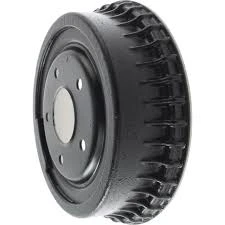
-
 Afrikaans
Afrikaans -
 Albanian
Albanian -
 Amharic
Amharic -
 Arabic
Arabic -
 Armenian
Armenian -
 Azerbaijani
Azerbaijani -
 Basque
Basque -
 Belarusian
Belarusian -
 Bengali
Bengali -
 Bosnian
Bosnian -
 Bulgarian
Bulgarian -
 Catalan
Catalan -
 Cebuano
Cebuano -
 Corsican
Corsican -
 Croatian
Croatian -
 Czech
Czech -
 Danish
Danish -
 Dutch
Dutch -
 Inggris
Inggris -
 Esperanto
Esperanto -
 Estonian
Estonian -
 Finnish
Finnish -
 French
French -
 Frisian
Frisian -
 Galician
Galician -
 Georgian
Georgian -
 German
German -
 Greek
Greek -
 Gujarati
Gujarati -
 Haitian Creole
Haitian Creole -
 hausa
hausa -
 hawaiian
hawaiian -
 Hebrew
Hebrew -
 Hindi
Hindi -
 Miao
Miao -
 Hungarian
Hungarian -
 Icelandic
Icelandic -
 igbo
igbo -
 Indonesian
Indonesian -
 irish
irish -
 Italian
Italian -
 Japanese
Japanese -
 Javanese
Javanese -
 Kannada
Kannada -
 kazakh
kazakh -
 Khmer
Khmer -
 Rwandese
Rwandese -
 Korean
Korean -
 Kurdish
Kurdish -
 Kyrgyz
Kyrgyz -
 Lao
Lao -
 Latin
Latin -
 Latvian
Latvian -
 Lithuanian
Lithuanian -
 Luxembourgish
Luxembourgish -
 Macedonian
Macedonian -
 Malgashi
Malgashi -
 Malay
Malay -
 Malayalam
Malayalam -
 Maltese
Maltese -
 Maori
Maori -
 Marathi
Marathi -
 Mongolian
Mongolian -
 Myanmar
Myanmar -
 Nepali
Nepali -
 Norwegian
Norwegian -
 Norwegian
Norwegian -
 Occitan
Occitan -
 Pashto
Pashto -
 Persian
Persian -
 Polish
Polish -
 Portuguese
Portuguese -
 Punjabi
Punjabi -
 Romanian
Romanian -
 Russian
Russian -
 Samoan
Samoan -
 Scottish Gaelic
Scottish Gaelic -
 Serbian
Serbian -
 Sesotho
Sesotho -
 Shona
Shona -
 Sindhi
Sindhi -
 Sinhala
Sinhala -
 Slovak
Slovak -
 Slovenian
Slovenian -
 Somali
Somali -
 Spanish
Spanish -
 Sundanese
Sundanese -
 Swahili
Swahili -
 Swedish
Swedish -
 Tagalog
Tagalog -
 Tajik
Tajik -
 Tamil
Tamil -
 Tatar
Tatar -
 Telugu
Telugu -
 Thai
Thai -
 Turkish
Turkish -
 Turkmen
Turkmen -
 Ukrainian
Ukrainian -
 Urdu
Urdu -
 Uighur
Uighur -
 Uzbek
Uzbek -
 Vietnamese
Vietnamese -
 Welsh
Welsh -
 Bantu
Bantu -
 Yiddish
Yiddish -
 Yoruba
Yoruba -
 Zulu
Zulu
drum brake spring compressor
Understanding Drum Brake Spring Compressors
Drum brake systems are a fundamental component of many vehicles, providing crucial stopping power and safety. Among the various components that contribute to the efficient functioning of drum brakes, one of the most essential tools for maintenance and repair is the drum brake spring compressor. This article delves into the importance of this tool, its operation, and best practices for use.
The Basics of Drum Brakes
Drum brakes operate through a system that consists of a drum, brake shoes, and a series of springs. When the driver applies the brakes, hydraulic pressure forces the brake shoes outward against the inner surface of the drum, creating friction that slows down the vehicle. Over time, the springs in the system can wear out or become damaged, necessitating replacement or adjustment. This is where the drum brake spring compressor becomes invaluable.
What is a Drum Brake Spring Compressor?
A drum brake spring compressor is a specialized tool designed to safely compress the springs used in drum brake assemblies
. These springs are often under significant tension, and removing them without a proper tool can pose serious risks, such as injury from a snapping spring. The compressor allows mechanics and DIY enthusiasts to handle brake components safely, facilitating the removal and installation of springs without excessive force or risk.How It Works
The operation of a drum brake spring compressor is relatively straightforward. The tool typically consists of two arms equipped with hooks or clamps that grip the spring. When the tool is engaged, the arms are pulled together, thereby compressing the spring. This compression allows for easier removal of the brake shoes and other components without the springs suddenly releasing tension.
drum brake spring compressor

To use the drum brake spring compressor, one must first safely lift the vehicle and remove the wheel to access the drum brake assembly. Next, the compressor is attached to the spring. Care must be taken to ensure that the compressor is securely hooked onto the spring, preventing any accidental slips during the process. Once the spring is compressed, the mechanic can safely detach the brake shoes and perform necessary repairs or replacements.
Safety Precautions
Using a drum brake spring compressor is not without its risks. To ensure safety during use, certain precautions should be followed
1. Wear Protective Gear Always use safety goggles and gloves to protect against springs that might snap or other debris that could fly out during the process. 2. Inspect the Tool Before use, check the compressor for any signs of wear or damage. Using a compromised tool can lead to accidents. 3. Stabilize the Vehicle Ensure that the vehicle is securely lifted and supported using jack stands. Do not rely solely on a hydraulic jack.
4. Understand the Mechanism Familiarize yourself with the specific brake system of your vehicle. Different models may have unique configurations that affect how the compressor should be used.
Conclusion
The drum brake spring compressor is an essential tool for anyone involved in maintaining or repairing drum brake systems. Its ability to safely and effectively compress springs makes it indispensable, reducing the risk of injury and ensuring that brake components can be serviced properly. As you engage in brake work, remember to prioritize safety, use the right tools, and always follow manufacturer guidelines. With the right practices in place, you can ensure that your vehicle's braking system remains reliable, giving you peace of mind on the road.
-
Why Choosing the Right Brake Drum Manufacturer Matters for Vehicle Safety and PerformanceKabarJun.05,2025
-
Understanding Heavy Duty Brake Drums: Key to Truck Safety and PerformanceKabarJun.05,2025
-
Reliable Braking Systems: Rear and Trailer Drum Brake Solutions for Heavy-Duty ApplicationsKabarJun.05,2025
-
Power and Precision: Why Brake Drums Still Dominate in Vehicle Safety SystemsKabarJun.05,2025
-
Brake Drums: Essential Components for Vehicle Safety and PerformanceKabarJun.05,2025
-
Superior Brake Drums & Rotors for Reliable Stopping PowerKabarJun.03,2025
-
Premium Brake Drums for Maximum Stopping PowerKabarJun.03,2025
